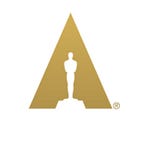What It’s Like to Conduct for the Oscars
A behind-the-scenes look at the world’s biggest awards show
As we gear up for the Oscars on February 26th, we’re sharing an exclusive look behind-the-scenes through our “Making of the Oscars” series.
When asked by reporters what makes his job special, Oscars musical director Harold Wheeler replied:
When I first conducted this show—first African-American to conduct it—the greatest feeling was when a music teacher from Crenshaw High School e-mailed me and said, “I just want you to know one of my students came in the Monday after the Oscars and said, ‘I know what I want to do now, and I saw it last night. And I didn’t think it was available for me.’” That is the proudest moment of my life.
From Capitol Studios, where the orchestra rehearses for the show, Harold shares his experience conducting under the Dolby Theatre® stage.
How did you get involved with the Oscars?
I’ve been writing music for the orchestra for years. Marc Shaiman was the musical director and he doesn’t conduct, so in 2008, he asked me to come along because I had done the orchestrations for Hairspray on Broadway. We had a great relationship, so that began this whole trail of Oscars.
What was your first conducting experience like?
I thought it was going to be simple because I had conducted the Emmys®, the People’s Choice Awards and the Grammys®.
Everybody kept saying, “This is the one. This is the one.” It was more nerve-wracking because it’s the Oscars: it’s the granddaddy of all the awards shows.
How do you prepare for the show?
We can’t recreate the music until we know who the nominees are. We don’t know who the presenters are at that time either, and we try not to use music from different years.
So we don’t get to start writing until after nominations are out.
Then, for the next month, it’s full-steam ahead.
I write the music with a team of three other people. I make the decisions as to what everybody writes. Then it’s three weeks until show day from the time we’re in here for the first orchestra rehearsals.
There are 134 pieces of music that go into the show.
That includes going into commercial, coming out of commercial, all of the presenter play-ons and then, of course, all of the categories. It’s a ton of music.
What part of the show gets you most excited?
The adrenaline comes in the third hour because that’s when you think you’re home free and when you’re prone to making a mistake. The last 20 minutes is the scariest part because it’s almost over, but it’s not over. And those 20 minutes also include the biggest awards.
What does it feel like to have to play winners off when speeches go on too long?
Every year, as the show gets further into the bewitching hour, the producers are looking at the clock. For the awardee, it’s their moment. They don’t look at it as if it’s a three-hour show and they have to keep it short. Since I’m down in the orchestra, when the music starts, they look at me.
I don’t make that decision. The director says to me, “It’s gone on a little long, Harold. Stand by.” And then he says, “Play them off,” and I start playing. What can I do?
In years past, the music has been streamed live from Capitol Studios into the Dolby through fiber-optic cables. This year, you’re back in-house. What’s the difference between the two experiences?
I prefer being at the Dolby, simply because you have a greater pulse of what’s going on in the show.
You have the audience there behind you, and you can feel their energy.
You don’t feel that looking at a monitor here.
I’ve done it at Capitol Studios three times. The biggest difference is that I don’t have to put my tuxedo jacket on until they say, “Your camera shot’s coming up.” That’s when I put my jacket on and tighten my tie up.
The same thing goes for the rest of the orchestra. Some of them have jeans on and just a jacket because nobody’s going to see what’s down here when we’re at Capitol. In the pit, people can look right down.
Do you get to pick your players?
I handpick all of them. I did 17 seasons as musical director on Dancing with the Stars and I fell in love with my orchestra there. I will take them wherever I go when I can. So when I put the orchestra together, they are the first 18 players. Then I pick the others. This year, there are 45.
Is there a piece that you love hearing live in front of the orchestra?
There are so many, I can’t single out any of them. The ‘In Memoriams’ were always very special. And we’re very careful about it this year because there were so many losses, and so many in the last two months before they started to put the package together.
Has there been a piece that required more time to rehearse?
We’ve taken extra time with some of the John Williams scores over the years because John writes very difficult stuff. We can all play it, without a doubt.
It just takes a few minutes longer to get it to, not my satisfaction, but what I feel is the satisfaction of John Williams.
When he’s out there, I don’t want him to say, “What is that?” Those big John Williams scores—Star Wars, Raiders of the Lost Ark—are harder than people think.
Do you have a favorite Oscar moment?
When I first met Robert De Niro and Dustin Hoffman, my heart was just pounding. These are people I admire so much. And we’re all here doing our jobs. I’m the head of the music department and you’re superstars. We’re all about the same — but not for me.
